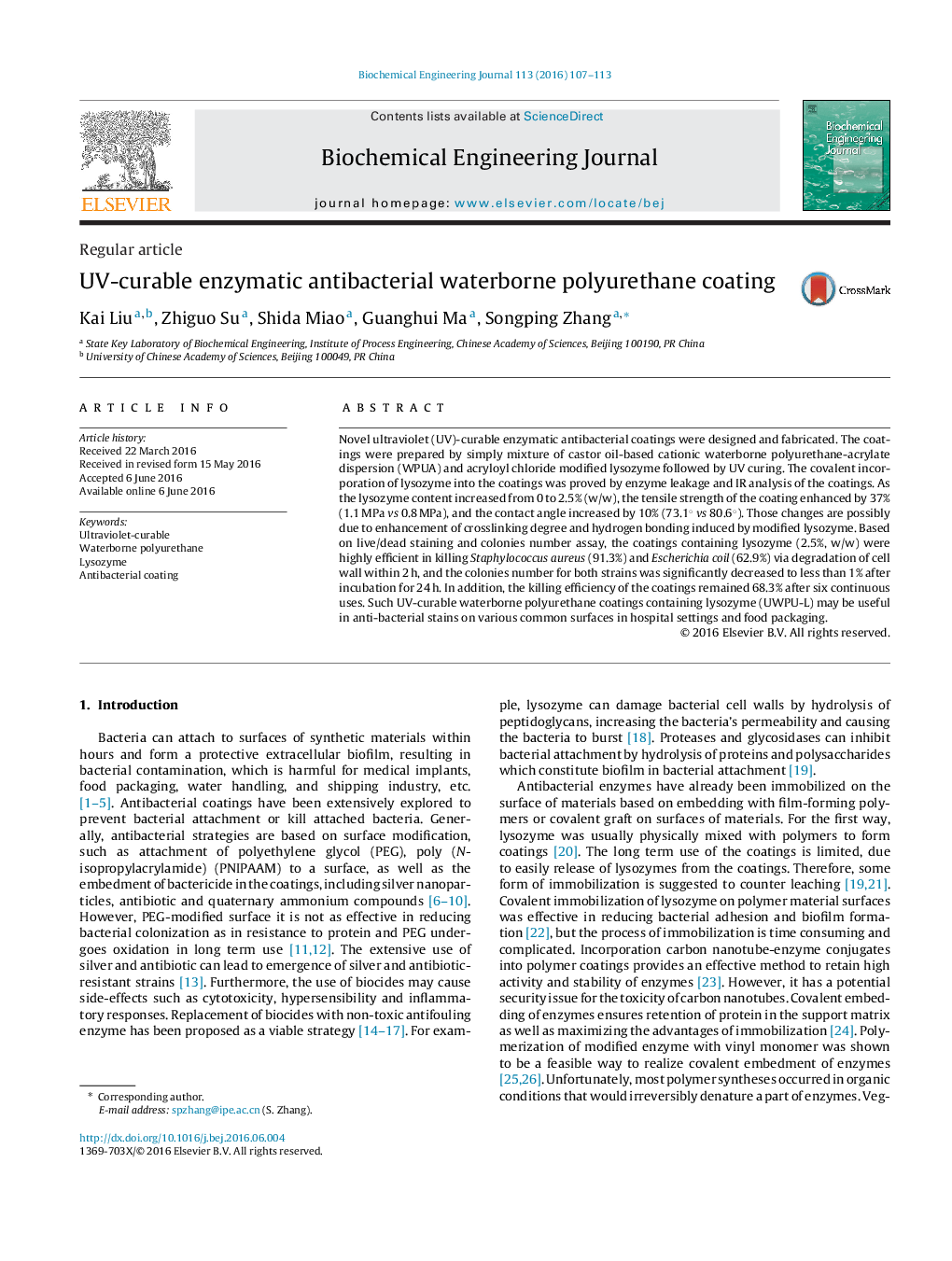| Article ID | Journal | Published Year | Pages | File Type |
|---|---|---|---|---|
| 2746 | Biochemical Engineering Journal | 2016 | 7 Pages |
•UV-curable waterborne polyurethane was designed and prepared.•Covalent immobilization of lysozyme in waterborne polyurethane by ultraviolet curing was discussed.•The antibacterial efficiency of enzymatic coating reached to 99%.•The killing efficiency of enzymatic coating remained 68.3% after six continuous uses.
Novel ultraviolet (UV)-curable enzymatic antibacterial coatings were designed and fabricated. The coatings were prepared by simply mixture of castor oil-based cationic waterborne polyurethane-acrylate dispersion (WPUA) and acryloyl chloride modified lysozyme followed by UV curing. The covalent incorporation of lysozyme into the coatings was proved by enzyme leakage and IR analysis of the coatings. As the lysozyme content increased from 0 to 2.5% (w/w), the tensile strength of the coating enhanced by 37% (1.1 MPa vs 0.8 MPa), and the contact angle increased by 10% (73.1° vs 80.6°). Those changes are possibly due to enhancement of crosslinking degree and hydrogen bonding induced by modified lysozyme. Based on live/dead staining and colonies number assay, the coatings containing lysozyme (2.5%, w/w) were highly efficient in killing Staphylococcus aureus (91.3%) and Escherichia coil (62.9%) via degradation of cell wall within 2 h, and the colonies number for both strains was significantly decreased to less than 1% after incubation for 24 h. In addition, the killing efficiency of the coatings remained 68.3% after six continuous uses. Such UV-curable waterborne polyurethane coatings containing lysozyme (UWPU-L) may be useful in anti-bacterial stains on various common surfaces in hospital settings and food packaging.
